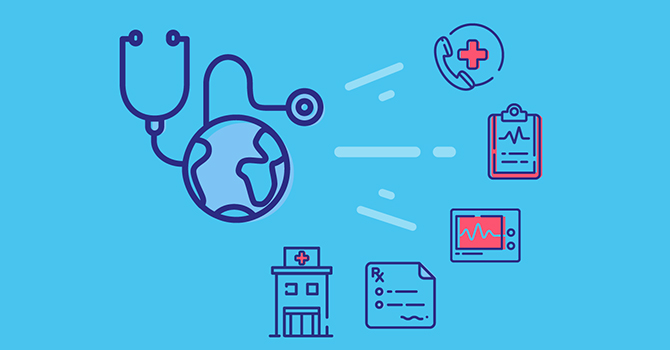How Global Health Work Can Inform and Help Transform the US Health Care System

Abagail Edwards
Bachelor’s Student in Public Health
When we engage in health work in under-resourced countries, we have opportunities to learn from and support communities who are creating their own innovative solutions to health care problems.
In many cases, we can use the insights and knowledge learned from underserved communities abroad here in the US to create better functioning health care systems, including and perhaps especially in our own low-resource settings.
Why Look Abroad?
Despite strengths in technology and innovation, the US healthcare system has been plagued by high costs for service, poor health outcomes, and significant inequities between populations. One example is the diabetes epidemic, which impacts about 10% of the US population, with higher prevalence among American Indians/Alaskan Natives and the Hispanic population.1 In addition, increasing cancer rates in the US have made it the number one cause of death, with no indication of stemming the tide.
One question to ask, then, is why engage in health work abroad when our energies could be used domestically to solve these pervasive issues?
Traditional Approaches to Global Health Work
Historically, we see at least three central reasons for doing work in low- and middle-income countries (LMIC).2
First, we are often pointed to a sense of moral obligation to support the health of others, no matter their nationality. This logic has long been paramount for those who feel a responsibility to ensure basic human rights to everyone, many of whom have gone abroad to do public health work.
Second, the US has used national security as a justification for global health work, as we assume some responsibility to protect against the spread of disease across international borders.
Third, global health events can have far-reaching economic impacts, so we have seen opportunity and protection in getting involved. Local economic growth can be spurred by investments in health care systems while also improving the health of the local population. Negative health events can harm both local and international markets, as we saw with the Ebola crisis of 2014, where $2.1 billion in economic growth was lost due to the outbreak.2
A community health worker typically comes from the very community they serve, and is trained to perform a wide variety of services to improve health outcomes in the local population. By having such a strong connection and presence within the community, they are able to promote the community’s voice within the health care system.
An Emerging Mindset for Global Health Work
In these traditional approaches—each ethically complex in many ways—it can be difficult to make clear, unambivalent arguments for global health work. An alternative argument is to pursue health work in LMIC in order to learn from local communities how to solve problems we ourselves are struggling to solve. Examples can be found in the evolution of the community health worker, mobile health, and new uses of telemedicine.
The Community Health Worker
For years, rural and underserved areas across the globe have used community health workers to address issues ranging from communicable diseases like malaria to chronic diseases like diabetes.3 A community health worker typically comes from the very community they serve, and is trained to perform a wide variety of services to improve health outcomes in the local population. By having such a strong connection and presence within the community, they are able to promote the community’s voice within the health care system.
In the US, community health workers have emerged as an increasingly important part of health care systems, using their expertise to mitigate inequities among vulnerable populations.2 Now, there are numerous laws and policies established to protect the rights of community health workers within the US health care system, where just decades ago they did not exist in our country.4
Connecting global and domestic health efforts can help us improve health outcomes for everyone, while also maximizing time and resources.
mHealth and Telemedicine
Mobile health, or mHealth as it is often referred to, is the idea of conducting health and medicine via a mobile device. In many contexts today, mHealth has become an integral part of the way we think about health.
Developing countries are often the most equipped to benefit from mobile services. In this way, we can learn from their practices with digital-based interventions.
One prime example is the use of mobile devices for emergency maternal care delivery in Bangladesh, Ghana, Uganda, and India. mHealth based approaches have proven to be effective in eliminating barriers to service, while increasing access to the health care system in under-resourced communities abroad.5
Similar to mHealth, telemedicine seeks to promote health by telecommunication methods ranging from mobile devices to robotics. Although telemedicine has been used for a while in the US, its scope is limited.
Telehealth is widespread in LMIC, where countries have taken on unique approaches to solving pervasive issues, such as low-bandwidth programs for mobile phones to reach more people.5 These solutions can be used as models for the US on how to better improve our telemedicine system, seeking universal access to various telecommunication methods.
Looking to the Future
Connecting global and domestic health efforts can help us improve health outcomes for everyone, while also maximizing time and resources. In order to address the most unique social issues within local communities, the US ought to consider looking carefully at all potential health care solutions, especially those that have seen great success in communities abroad. With careful cross-continental collaborations, we have promising opportunities to transform how we manage health care on the national level.
References
- Centers for Disease Control and Prevention. National Diabetes Statistics Report, 2017. Atlanta, GA: Centers for Disease Control and Prevention, US Department of Health and Human Services; 2017. https://www.cdc.gov/diabetes/data/statistics/statistics-report.html.
- Ruchman SG, Singh P, Stapleton A. Why US Health Care Should Think Globally. AMA J Ethics. 2016;18(7):736-742. doi:10.1001/journalofethics.2016.18.7.msoc1-1607.
- World Health Organization. Global Experience of Community Health Workers for Delivery of Health Related Millennium Development Goals: A Systematic Review, Country Case Studies and Recommendations for Integration into National Health Systems.; 2010. https://www.who.int/workforcealliance/knowledge/publications/CHW_FullReport_2010.pdf?ua=1.
- MHP Salud. History of Community Health Workers (CHWs) in America. https://mhpsalud.org/programs/who-are-promotoresas-chws/the-chw-landscape/. Accessed April 25, 2019.https://mhpsalud.org/programs/who-are-promotoresas-chws/the-chw-landscape/
- Kasthurirathne SN, Mamlin BW, Purkayastha S, Cullen T. Overcoming the Maternal Care Crisis: How Can Lessons Learnt in Global Health Informatics Address US Maternal Health Outcomes?. AMIA Annu Symp Proc. 2018;2017:1034–1043. Published 2018 Apr 16.
- Read more stories about health care in other countries.
- View stories related to community based health care.
- Learn more about Global Public Health.
ABOUT THE AUTHOR
 Abagail Edwards, BA ’19, studied Community and Global Health at the University of
MIchigan School of Public Health, with a minor in Spanish Language, Literature, and
Culture. In the fall, she will be serving as a community health facilitator with the
Peace Corps in Peru for 27 months. Edwards is interested in the intersectionality
of global health and hopes to work to reduce health inequities abroad.
Abagail Edwards, BA ’19, studied Community and Global Health at the University of
MIchigan School of Public Health, with a minor in Spanish Language, Literature, and
Culture. In the fall, she will be serving as a community health facilitator with the
Peace Corps in Peru for 27 months. Edwards is interested in the intersectionality
of global health and hopes to work to reduce health inequities abroad.
